
Raghavendra Rao, Director of Customer Excellence at Sprinklr, outlines three steps to build a customer service strategy centered around self-service.
Have you ever been in a situation where you were running late for a flight, and an airport self-service kiosk saved the day? For starters, airport self-service kiosks speed up the formalities of boarding a flight, making life easier for staff and passengers. It’s a win-win.
Why do you need self-service to improve customer service?
An impeccable customer service strategy focuses on having excellent interactions — it is not about your agents meeting their SLAs but ensuring that every interaction with customers is pleasant, helpful, and memorable.
“Go the extra mile rather than letting your customer travel miles to get a solution!”
Not every customer is looking for an agent to resolve their issues neither does every problem need an agent intervention. Get an insight into the channels your customers prefer and guide them towards solutions by building a self-service system as a part of your customer service strategy.
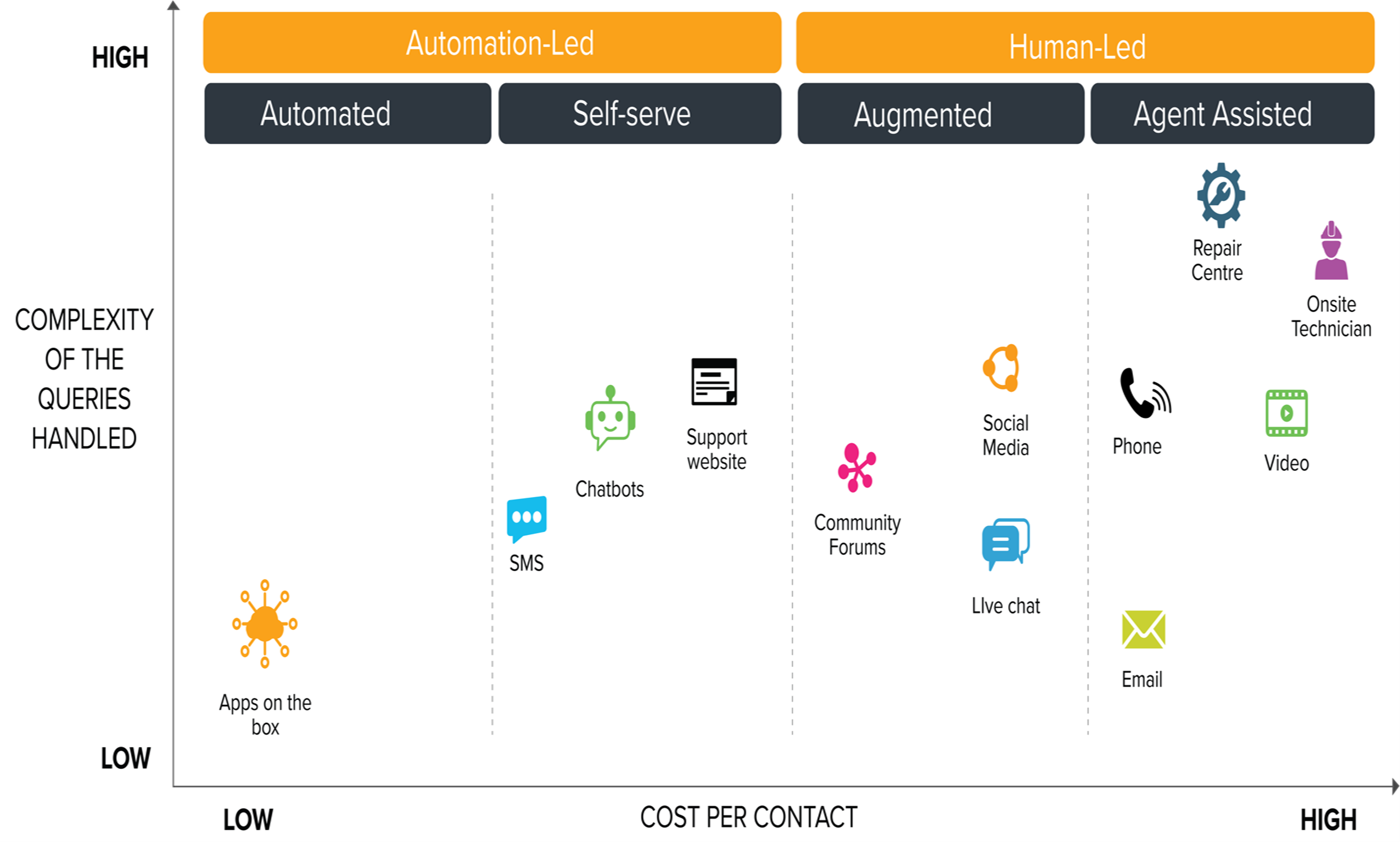
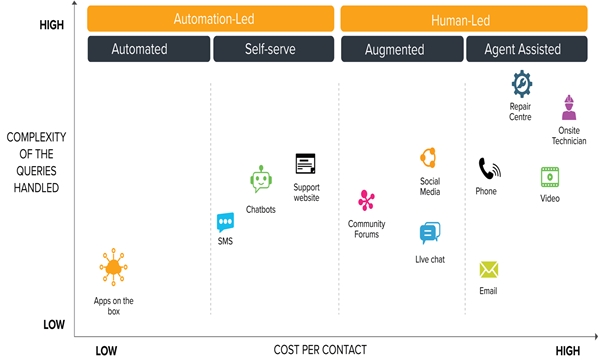
Three steps to build a customer service strategy centered around self-service
1. Start by scoring your customer interactions
A needle and a sword are two equally useful tools. As the famous idiom goes, why use a sword when you get the job done by a needle? Categorizing a complaint helps you understand if the query at hand could be solved by a needle or a sword. Most often, you will realize that all you need is a bot with a canned response to resolve a query. Human intervention isn’t required at all!

The first step is to have a framework to objectively categorize customer queries/complaints. Start by scoring them as per their complexity, severity, and effort. It helps you understand the context of the query and map the right channel for resolving it later.
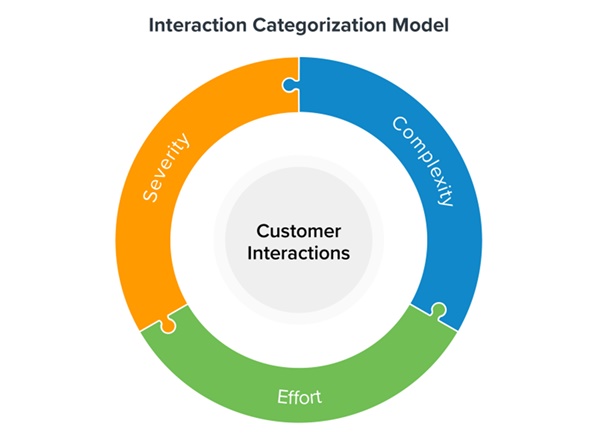 a. Determining Query Complexity [High – Low]
a. Determining Query Complexity [High – Low]
- Is the answer readily available?
- What information do I need to resolve the query?
- Can it be handled by automation, BOTs, a knowledge base, or an agent?
Example: Query – I need help programming my Amazon Fire Stick remote.
- Is the answer readily available? – Yes.
- What information do I need to resolve the query? – The product name is Amazon Fire Stick.
- Can it be handled by automation, BOTs, a knowledge base, or an agent? – Yes, directing the user to a knowledge base article or a chatbot that provides step-by-step configuration instructions should do the trick.
Overall Complexity Score – Low
b. Determining Query Severity [High – Low]
- Does the query require urgent attention?
- How emotionally distressed is the customer?
- Will this query affect the brand reputation or the user’s safety?
- What are the financial costs involved for the customer?
- Will not resolving this query on an urgent basis have repercussions on the brand image
Example: Query – What is your website’s return policy for the MacBook Pro?
- Does the query require urgent attention? – Yes
- How emotionally distressed is the customer? – They don’t have clarity on the return policy, which impacts their decision whether to buy the product or not.
- Will this query affect the brand reputation or the user’s safety? – Yes
- What are the financial costs involved for the customer? – High, if the customer finds the return policy favorable, he will tilt more towards buying the product. If he doesn’t, he will move on to a brand with favorable return policies.
- Will not resolving this query on an urgent basis have repercussions on the brand image? – Yes
Overall Severity Score – High
c. Determining Customer Effort [High – Low]
- Does it require a high effort to answer this query, like a repair or full diagnosis?
- How difficult would it be for the customer to resolve it?
- Is it easy for the customers to follow instructions?
- Are tools and resources readily available so the customer can easily resolve the query?
Example: Query – It’s been 2 days since the purchase, and my phone is still not updated with the complimentary antivirus solution.
- Does it require a high effort to answer this query, like a repair or full diagnosis? – Yes
- How difficult would it be for the customer to resolve it? – Very difficult, customer effort required is high for this query.
- Is it easy for the customers to follow instructions? – Yes, the complexity is low
- Are tools and resources readily available so the customer can easily resolve the query? – It’s a case of delayed complimentary service and could only be resolved through agent intervention.
Overall Customer Effort Score – High
2. Map your service channels based on the query interaction scores
By using the above approach, you will arrive at 8 ways of scoring every query, starting from Low, Low, Low, until High, High, High. If you wish to spice things up, introduce ‘medium’ to your high-low scoring scale. You will discover 27 unique scores instead of 8.
Start mapping a primary and a secondary channel for each score. The tables below show lists a sample approach based on the interaction categorization model:
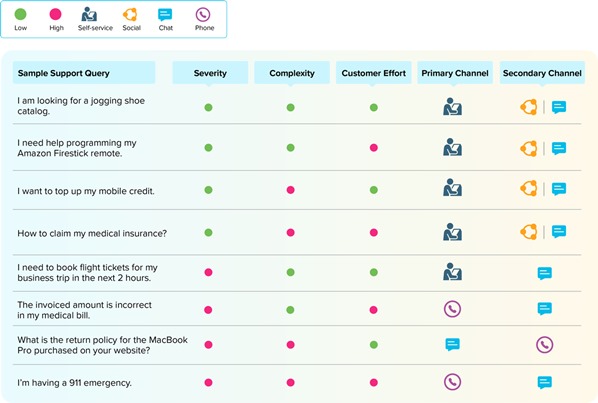
Channel Mapping for a Technology company
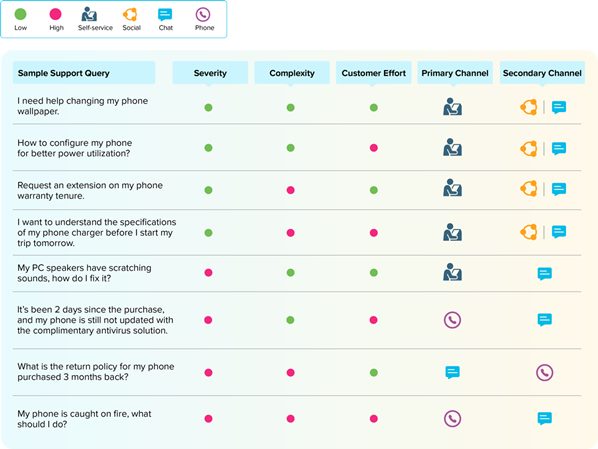
3. Understand your customer’s resolution jobs
Gartner has identified six jobs or tasks that customers complete during their resolution journey. These tasks don’t have any particular order, and customers may need to accomplish more than one “job” at a time.
“Service leaders must first understand the customer resolution jobs and then guide customers into the right channels that require the lowest effort and provide the quickest outcome. – Gartner
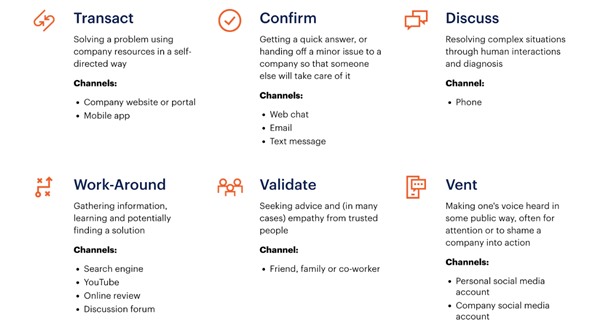
Source: Gartner
Key takeaways
- How powerful you want your customer to feel depends on how easily they can resolve a query independently.
- It’s all about interactions, keep it easy for the consumer. Better interactions lead to better customer experience!
- Aim to make customer resolution easier, assign the right channels based on the query context.
At the end of the day, the devil lies in the details. Take care of small things, and big things will fall into place! It’s true in the case of customer service, too.
About the Author
Raghavendra Rao is Director of Customer Excellence at Sprinklr.




